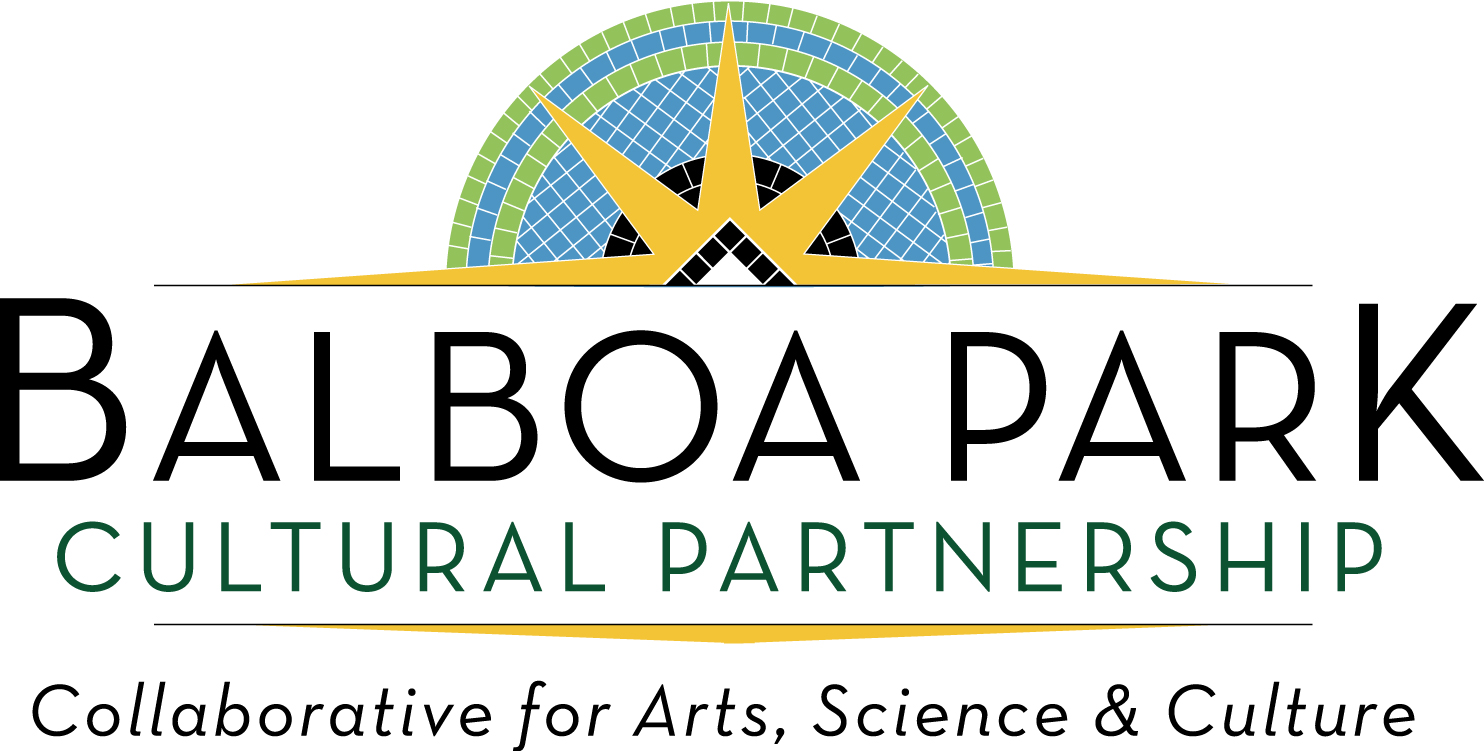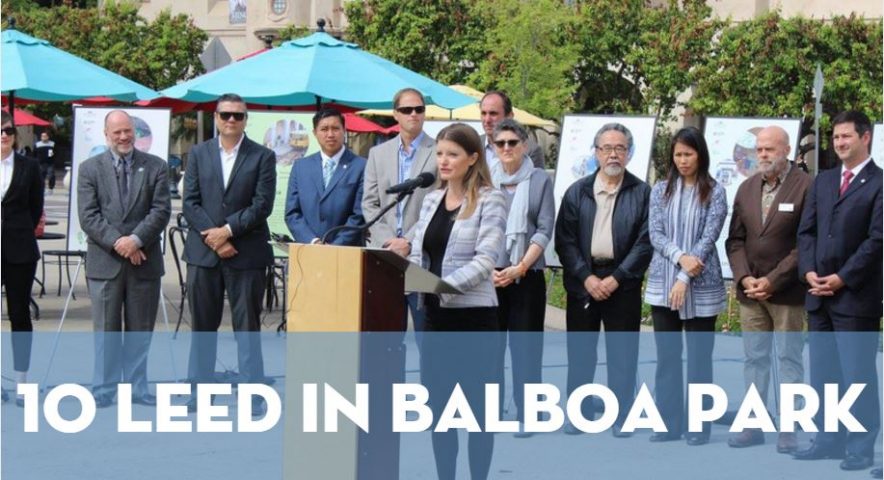On the Path to Becoming One of the Most Sustainable Urban Parks
SAN DIEGO, CA (April 19, 2017) – The Balboa Park Cultural Partnership (BPCP) announced today its achievement of LEED certification of 10 Park buildings—bringing it closer to its goal of being a completely sustainable urban park. With the addition of certifications for the Japanese Friendship Garden and San Diego Museum of Man late last year, Balboa Park accomplished its 10 LEED building goal by certifying seven buildings in the last four years.
The LEED certifications are a result of the BPCP Environmental Sustainability Program, and a collaborative effort by the City of San Diego, San Diego Gas & Electric (SDG&E), San Diego Green Building Council and BPCP’s 30 member institutions. The building certifications required energy-saving projects, water efficiency upgrades in restrooms and kitchens, waste reduction strategies, green cleaning initiatives and more. Overall, the Sustainability Program has resulted in an annual savings of more than $1.6 million in energy reduction at Balboa Park.
“Through collaboration with our partners, Balboa Park has implemented strategies for energy-efficiency and green operations. The results have been extraordinary,” said Dr. Steven Snyder, Balboa Park Cultural Partnership board president and CEO of the Fleet Science Center. “Even in these historic buildings throughout Balboa Park, sustainability can be achieved. This should be an indicator that similar measures can be effectively implemented in existing homes and buildings throughout the county to help us realize a more sustainable future.”
San Diego is a leader in innovation and sustainability. The City’s Climate Action Plan, adopted in 2015, sets forth common-sense strategies to achieve attainable greenhouse gas reduction targets. “By striking a sensible balance between protecting our environment and growing our economy, San Diego can support clean technology, renewable energy and economic growth,” said San Diego Mayor Kevin L. Faulconer. “Balboa Park’s LEED-certification achievement is an integral part of helping San Diego reach its goal of cutting greenhouse gas emissions in half by 2035.”
The San Diego Museum of Man, where Bertram Goodhue designed the architectural layout of the Park, represents the first structure built for the 1915 exposition. Its LEED Gold certification and 100 percent carbon neutral status make it the first building in the Park to achieve these distinctions.
In 2016 Balboa Park’s newest building, the Japanese Friendship Garden’s Inamori Pavilion, became the first new construction LEED project in the Park with a design that allows for natural lighting and airflow. The site was carefully selected to create harmony between the structure and the environment.
From the Park’s oldest to its newest buildings, completed energy-efficient projects to date have equated to a reduction of more than 9.12 million kilowatt-hours of electricity and greenhouse gas emissions of 6,409 metric tons each year, an environmental equivalent of taking 1,354 cars off our roads.
“The extraordinary collaboration and partnership between our City staff, SDG&E, San Diego Green Building Council and BPCP elevates the Park as a national model for sustainability and energy efficiency,” said San Diego City Councilmember Chris Ward. “Achieving this LEED certification goal highlights the Park’s ongoing commitment to leadership in supporting our city’s aggressive climate action goals and maintaining a high standard for sustainability.”
From the beginning, SDG&E has been a key partner in BPCP’s LEED certification achievements, helping Park leaders understand the various energy efficient efforts, tools to foster conservation, and ways to maximize energy cost reduction. This support has enabled the Park’s member institutions to implement more than 400 energy-saving projects.
“Balboa Park has long been the jewel of San Diego,” said Mike Schneider, SDG&E Vice President, Operations Support Sustainability and Chief Environmental Officer. “We are proud to have helped the Park accomplish these greenhouse gas reductions, as SDG&E works to becoming the cleanest, safest and most reliable energy company in America.”
Another enormous sustainable step forward is the installation of water efficient fixtures, which save the park one million gallons of water each year—that’s nearly 3,000 gallons per day!
The San Diego Green Building Council (SDGBC) has been a strong partner with BPCP to achieve this significant milestone of LEED certification with help from its Green Assistance Program (GAP). Volunteers who are managed and trained by SDGBC staff have assisted with green operations and facilities.
“Thanks to everyone’s commitment to collaboration and the collective learning process, Balboa Park serves as a learning lab for implementation of green building strategies,” said Paulina Lis, Executive Director of the San Diego Green Building Council. “Over 100 volunteers were able to participate in a hands-on learning process, while contributing to improved environmental performance, building a network of peers, pursuing professional credentials and getting valuable project experience.”
Park Sustainability Success At-A-Glance
• Saving 9.12 million kWh in electricity and 6,409 metric tons of greenhouse gas emissions each year – Equivalent to taking 1,354 cars off our roads
• 10 LEED-certified buildings – From the oldest building to the newest in the Park
• $1.66 million dollars saved per year – For facilities to put back into their programs
• Conserving one million gallons of water a year – That’s nearly 3,000 gallons per day
LEED Certified Buildings/year of certification:
• San Diego Natural History Museum (Certified, 2009)
• Fleet Science Center (Silver, 2010/2015)
• WorldBeat Cultural Center (Silver, 2012)
• Casa de Balboa (Silver, 2015)
• Casa del Prado (Silver, 2015)
• House of Charm (Silver, 2015)
• The Old Globe Theatre (Silver, 2015)
• San Diego Hall of Champions (Silver, 2015)
• Japanese Friendship Garden (Certified, 2016)
• San Diego Museum of Man (Gold, 2016)
ABOUT BALBOA PARK CULTURAL PARTNERSHIP
Balboa Park Cultural Partnership is a nonprofit organization through which 30 arts, science and cultural institutions in Balboa Park collaborate to achieve shared goals. By helping these groups achieve greater organizational efficiency, innovation and excellence, it seeks to contribute to the vitality and sustainability of Balboa Park. For more information visit www.bpcp.org.
###
###

